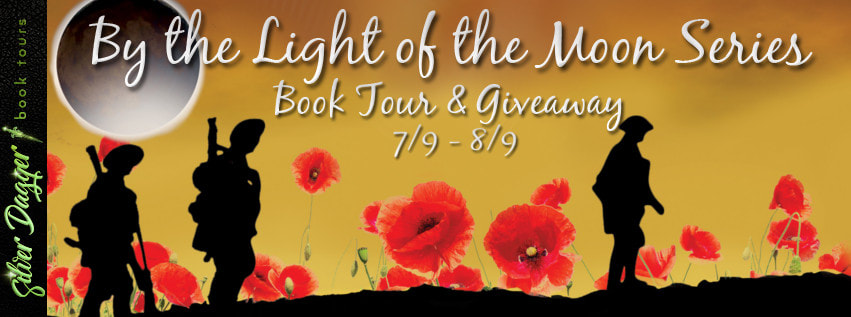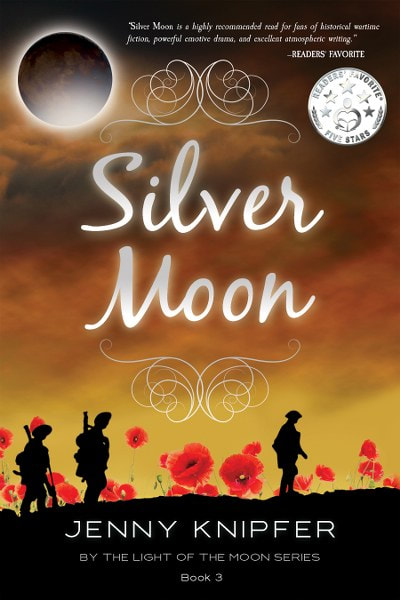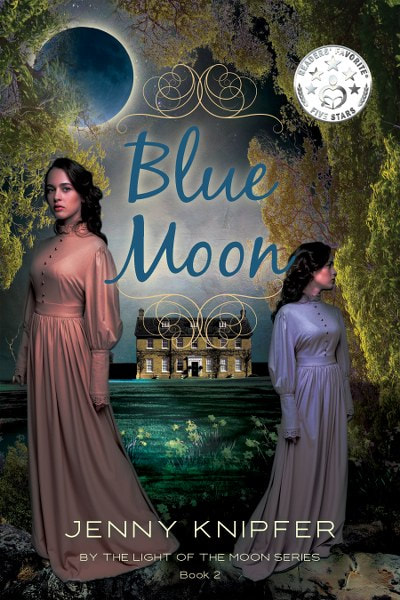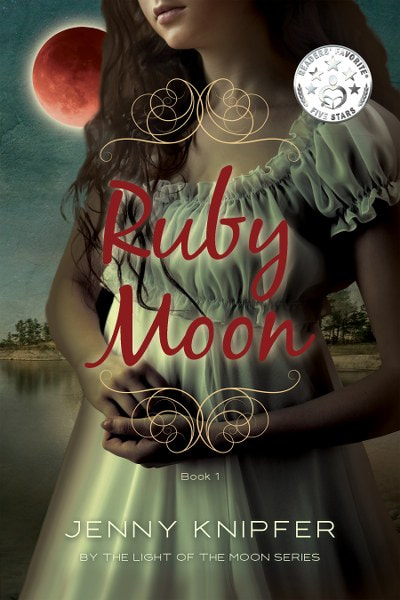Why, By the Light of the Moon?
Who doesn’t love the moon and its mystic lure? Although I based my series on a foundation of Christian faith, I added depth and richness by including stories and myths. Here’s how the moon came to play a vital role...
Ruby Moon: It all started with a real red moon, a bag of garbage, and a hot, sticky July night twenty years ago. I stayed up late reading one evening. Before I went to bed, I remembered the garbage I’d placed on the deck. (Out in the country, where we live, one does not leave garbage out; the local wildlife will have a hayday.)
After marking where I’d left off in my book, I swung the front door open, picked up the hefty bag of garbage, and tottered to the dumpster. The damp night air told of a coming storm. I looked up to check the sky and gasped at what I saw. The sight was so surreal; I dropped the bag of garbage with a splat and started, incredulously, at a full red moon, hanging over the top of the tree line to the west of our home. Prickles on my arms erupted, and I immediately wanted to write about that moment. And so I did...
After depositing the garbage, I ran back to the house, sat in my favorite chair, took up my pen and notebook, and began. I paired the moon sighting with a story of a young woman who accidentally kills someone she cares for. Ruby Moon and Jenay’s story also sprang from a true story of a friend who played a part in a real accidental death.
In the novel I play off the image of the moon through Jenay’s love of nature and the heritage she bears—Ojibwe. Her Ojibwe aunt, Maang-ikwe or Loon-woman, tells Jenay truth through tales, some of which include the moon. Most of my stories I tell through Maang-ikwe are pure fiction, but in truth many Native American cultures charted their lives by the cycles of the moon.
There is a moon in June/July called the Strawberry Moon, not only because the moon can appear red during these months, but also because the wild strawberries ripen then.
Blue Moon: the second book in my series came from the idea of something rare, like a blue moon. The saying goes, “Once in a Blue Moon”, which actually references a month that contains two full moons and is a rather rare occurrence.
I had wanted the title to be “Once in a Blue Moon”, originally, but being the second book, I figured I might confuse readers. So, I went with simply Blue Moon, representing something rare and true: friendship, love, and forgiveness.
A tale of sibling rifts, challenged friendships, and second chance loves formed on the page, and Vanessa and Valerie’s story came to life in Blue Moon.
Silver Moon: the third book in the series came to me on an autumn day, while I sat by my favorite fishing hole in a backwater slough of the Red Cedar River. Evening approached, and I watched my husband, backlit by the setting sun, casting his fishing line, hoping for a bite. I could just make out the faint, silver outline of the moon in the sky. As I lowered my gaze to the eddy of swirling water in front of me, where the current and the stagnant water of the slough met, I thought of what it would be like to be submerged in that chilly, temtuous liquid. Then the first scene of Silver Moon spilled out of my imagination. While leaf boats floated by and migrating geese honked overhead, I pecked out the words on my iPad, and Silver Moon was born.
Excerpt from Silver Moon:
Oshki listened and looked up at the moon smiling down on them. His thoughts drifted from the priest’s words to a tale his great aunt had told him when he was a child. Maang-ikwe’s mellow and slightly nasal voice spilled out the story in his memory . . .
“Now there was Moon whom Gitchi-manidoo made. Moon looked down from heaven. He liked to watch de life of men, but he sad not to gaganoozah, talk, with man. Gitchi-manidoo knew Moon could not talk men’s talk, so he thought of way. He asked Moon question.
“‘Moon, you tired of always being de same color?’ Moon say, ‘’Eya,’ yes. Moon not think of that before, but he tired of gray. So Gitchi-manidoo gave him gift.”
“What did the moon get?” Oshki widened his eyes and asked. The firelight of the hearth danced behind them.
“Moon’s maker say to him, ‘I give you red, orange, blue, gold, and silver to dress in.’
“Moon pleased, but he ask, ‘How I know which color to put on?’
“Gitchi-manidoo tell him, ‘Sun will tell you.’ So . . . Moon listens for Sun and its light to tell him when to dress in a different color.”
“Does the moon have a favorite color?” Oshki asked.
“Perhaps.”
“Is the moon happy wearing different colors?”
Maang-ikwe smiled at him. “It is just so, ingozis. Moon is happy, he
wear color so Anishinaabe know when to do certain things.” “Like what?”
“Harvest and thanks. Planting and protect. Joy and laughter. Sorrow and tears.”
Oshki was puzzled. He had an inclination of what she meant, for the moon glowed orange often at harvest time, and he had seen it look golden and full every once in a while. Oshki couldn’t remember seeing the other colors, though.
“Will I see all the colors of the moon? Will the moon tell me when to do these things?” Oshki watched his great aunt. He loved her stories, but he often did not understand them.
Maang-ikwe paused and gazed at him so hard it almost hurt. He wanted to turn away but didn’t.
“What is it?” he finally got up the courage to ask her.
“Ingozis, my son. I see a silver moon.” Maang-ikwe placed a shaky hand on his chin.
“What will a silver moon tell me?” Oshki’s brows puckered together.
She hesitated, sighed, and trailed down the curve of his smooth boy cheek with her wrinkled finger. “Silver a metal that chases away maji-manidoo, bad spirits. The light of de silver moon a cleansing light. It save you from bad things and help you remember Gitchi-manidoo, who protects.”
Maang-ikwe’s hand hovered a few seconds longer at Oshki’s cheek, then she dropped it back into her lap and turned her head to the low, flickering flames.
Oshki looked at his aunt’s profile and wondered when he would see this moon and what he would need protecting from . . .
Thank you so much for reading!
You can learn more about me and my books at jennyknipfer.com









